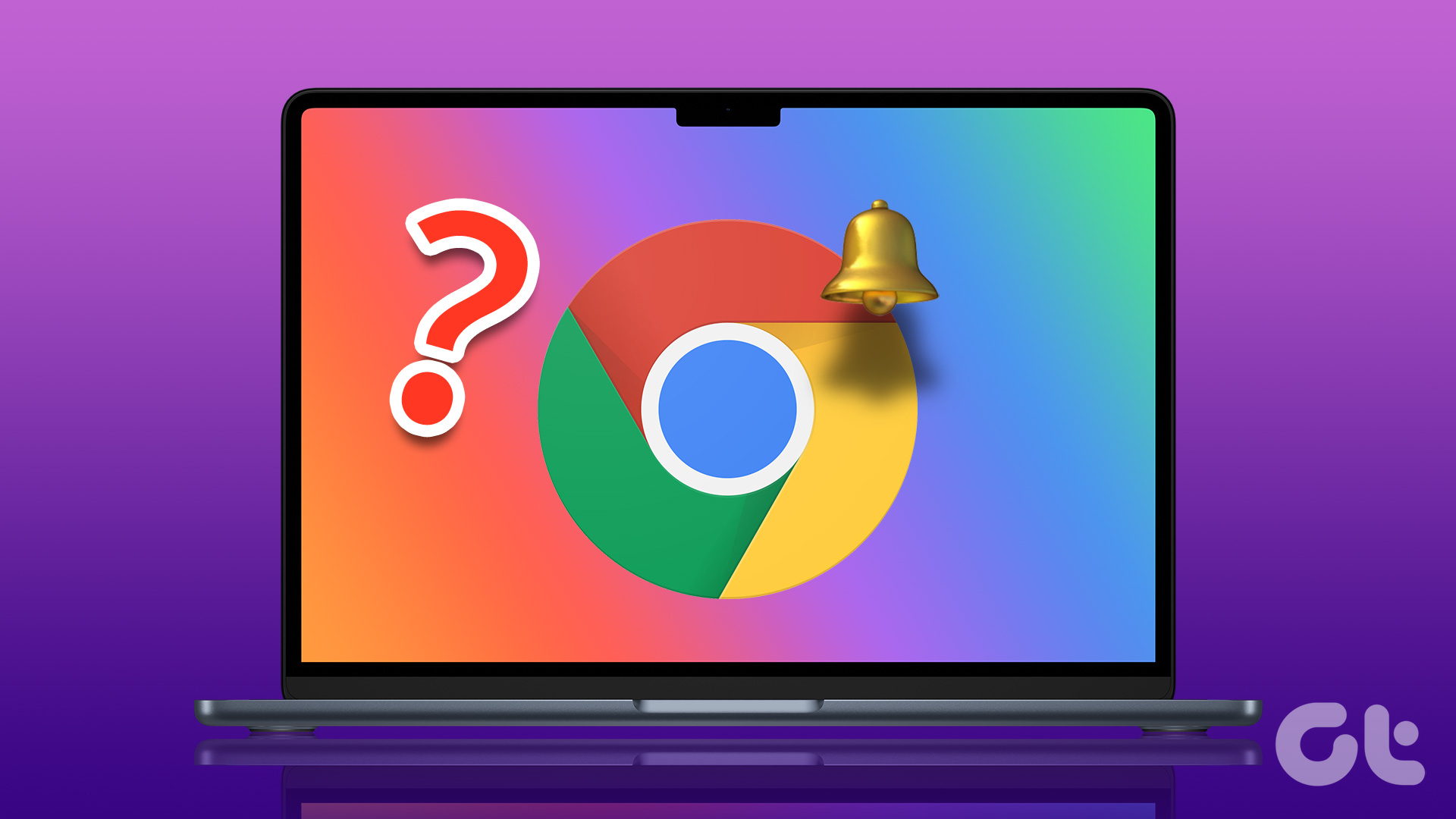Google Chrome’s constant web notifications can disrupt your Mac workflow. If you’ve allowed notifications from news, finance, and social media websites, Google Chrome fills your Mac notification center with dozens of alerts in no time. Here’s why you’re getting Chrome notifications on Mac and troubleshooting steps to stop the behavior.

Real-time Chrome notifications are important for websites like WhatsApp, Twitter, Slack, or Basecamp. But the same news and other irrelevant sources can irritate you. You can either completely disable Chrome notifications on Mac or make the required changes from the Chrome Settings menu.
Why am I getting Chrome notifications on Mac
The app asks for notification permission when first installing and launching Google Chrome on Mac. Most Mac users allow notification permission and start using the browser.

Whenever you visit news, blog, finance, or sports websites in Google Chrome, a pop-up appears at the top to allow the website to send notifications. Due to some habit or muscle memory, most users click allow to dismiss the popup and read the article. Website administrators adopt such practices to push notifications to your device and improve user retention rate. While most websites only send relevant alerts, some can become malicious by sending an abnormal number of notifications throughout the day.
Check site settings in Google Chrome
Google Chrome lets you check which websites can send notifications to your Mac. You can view the list and disable the behavior of unnecessary websites.
Step 1: Open Google Chrome on your Mac.
2nd step: Click on the kebab menu (three dots) in the upper right corner.

Step 3: Open Settings.

Step 4: Select “Privacy & Security” from the left sidebar.
Step 5: Click on “Site settings”.

Step 6: Select “Notifications” from the Permissions menu.

Step 7: See the list of websites allowed to send notifications.

Step 8: Click the three-dot menu next to a website and select “Delete”.

The problem with the above trick is that the next time you visit the same website, it will ask you for notification permission again. If you want to completely disable the permission, follow the steps below.
Step 1: Head to Notifications under Site Settings in Google Chrome Settings (refer to the steps above).
2nd step: Click the arrow icon to expand Website Settings.

Step 3: Expand the menu next to Notifications.
Step 4: Select Block.

The website will not ask for notification permission on Google Chrome. The same settings do not apply to other browsers on your Mac. If you switch to Safari or Microsoft Edge in the future, the website may request the same permission.
Do not allow sites to send notifications
By default, all websites can request to send notifications in Google Chrome. Follow the steps below to completely stop the behavior.
Step 1: Open Google Chrome settings and go to Privacy & Security (check the steps above).
2nd step: Select Notifications under Site Settings.

Step 3: Click the radio button next to “Don’t allow sites to send notifications” and you won’t see annoying pop-ups while browsing the web.

Disable Google Chrome Notifications on Mac
If you don’t want to manage Google Chrome notifications on Mac, you can completely disable the permission in the System Settings menu. Here’s what you need to do.
Step 1: Click on the small Apple icon in the upper left corner.
2nd step: Open System Settings.

Step 3: Select Notifications from the sidebar.
Step 4: Open Google Chrome under “App Notifications”.

Step 5: Disable notification permission in the next menu.

You should be careful when completely disabling notifications in Google Chrome. You may miss important alerts from essential websites and services on Mac.
Use Focus on Mac
macOS comes with a handy Focus feature to create a distraction-free environment on Mac. You can enable Focus to stop notifications and calls on your Mac.
Step 1: Click Control Center in the upper right corner.

2nd step: Activate focus and you’re good to go.

You can read our article to use Focus on Mac.
Be careful when browsing
Websites are finding innovative ways to trick you into allowing notification permission. You should read these pop-ups carefully before blindly clicking “Allow”. You should also regularly check the “Privacy and security” menu of Google Chrome to control these websites.
